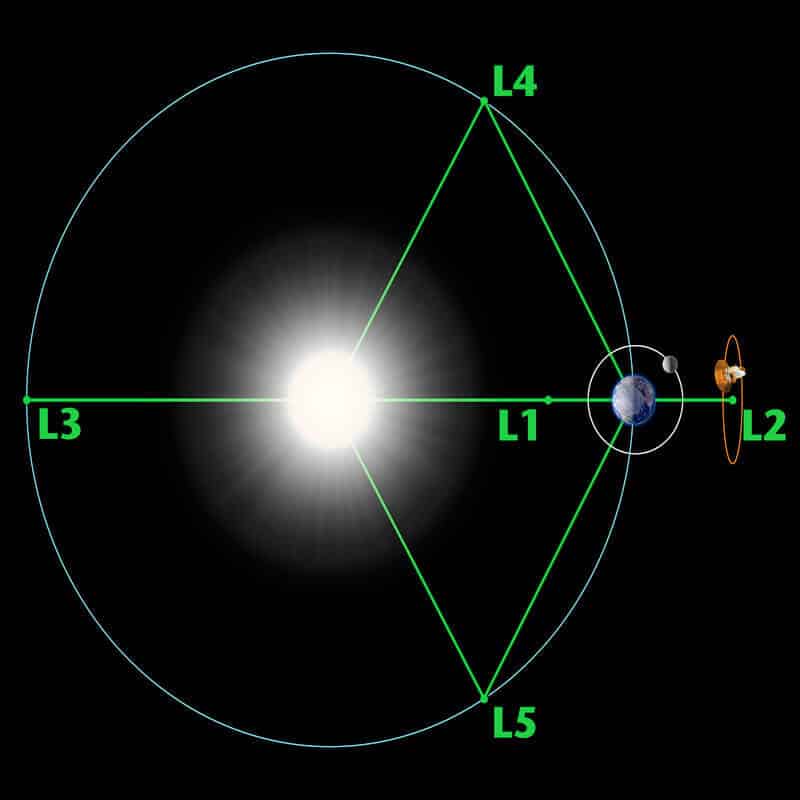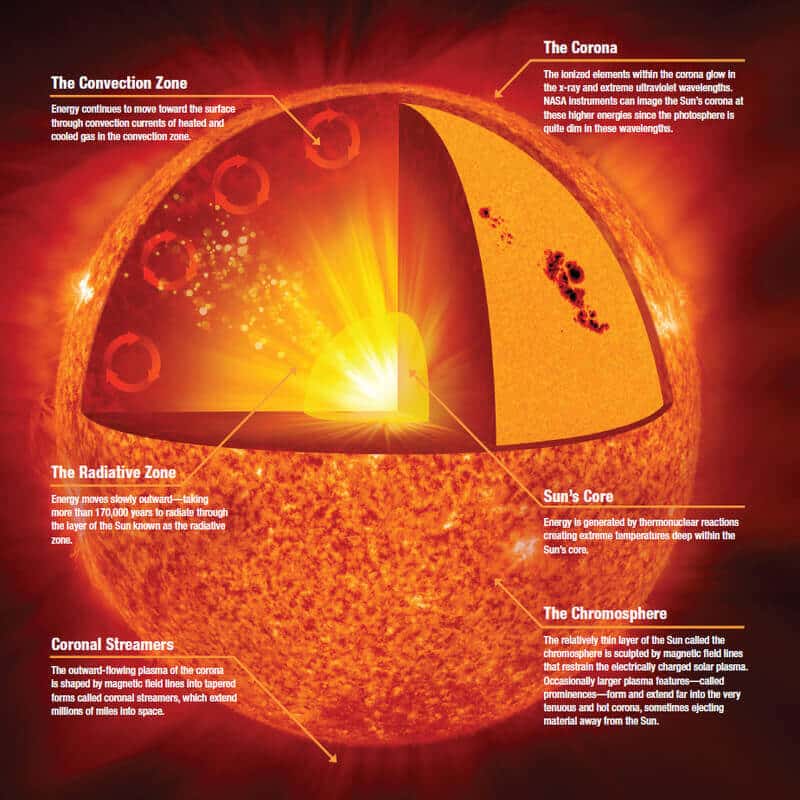
Aditya-L1 will be the first space-based Indian mission to study the Sun. Recently, the Visible Line Emission Coronagraph (VLEC), the primary payload onboard Aditya-L1, was handed over to Indian Space Research Organisation (ISRO) by the Indian Institute of Astrophysics (IIA). This reiterates the plan to launch the mission by June-July 2023. Read here to learn more about the Indian solar mission.
The Indian Space Research Organisation (ISRO) is planning to launch the Aditya-L1 mission by June or July this year. Aditya-L1 is the first Indian space mission to observe the Sun and the solar corona.
ISRO is planning to launch the Aditya-L1 mission, the first Indian space mission to observe the Sun by June/July 2023.
Aditya-L1 Mission
Aditya-L1 will be the first space-based Indian mission to study the Sun.
- It was conceptualized in January 2008 by the Advisory Committee for Space Research.
The spacecraft shall be placed in a halo orbit around the Lagrange point 1 (L1) of the Sun-Earth system, which is about 1.5 million km from the Earth.
- A satellite placed in the halo orbit around the L1 point has the major advantage of continuously viewing the Sun without any occultation/eclipses.
- This will provide a greater advantage in observing solar activities and their effect on space weather in real-time.
- The Aditya-L1 mission will take around 109 Earth days after launch to reach the halo orbit around the L1 point.
The spacecraft carries seven payloads to observe the photosphere, chromosphere, and the outermost layers of the Sun (the corona) using electromagnetic and particle, and magnetic field detectors.
- The instruments of Aditya-L1 are tuned to observe the solar atmosphere mainly the chromosphere and corona.
- In-situ instruments will observe the local environment at L1.
- Using the special vantage point L1, four payloads directly view the Sun and the remaining three payloads carry out in-situ studies of particles and fields at the Lagrange point L1, thus providing important scientific studies of the propagation effect of solar dynamics in the interplanetary medium.
There is a total of seven payloads on board with four of them carrying out remote sensing of the Sun and three of them carrying in-situ observation.
- Visible Line Emission Coronagraph (VLEC): For Corona/Imaging & Spectroscopy
- Solar Ultraviolet Imaging Telescope (SUIT): Photosphere and Chromosphere Imaging- Narrow & Broadband
- Solar Low Energy X-ray Spectrometer (SoLEXS): Soft X-ray spectrometer: Sun-as-a-star observation
- Aditya Solar wind Particle Experiment (ASPEX): Solar wind/Particle Analyzer Protons & Heavier Ions with directions
- High Energy L1 Orbiting X-ray Spectrometer (HEL1OS): Hard X-ray spectrometer: Sun-as-a-star observation
- Plasma Analyser Package for Aditya (PAPA): Solar wind/Particle Analyzer Electrons & Heavier Ions with directions
- Advanced Tri-axial High-Resolution Digital Magnetometers: In-situ magnetic field (Bx, By and Bz).
The suits of Aditya-L1 payloads are expected to provide the most crucial information to understand:
- coronal heating
- coronal mass ejection (CME)
- pre-flare and flare activities and their characteristics
- dynamics of space weather
- propagation of particles and fields etc.
Aditya-L1 will be launched using the Polar Satellite Launch Vehicle (PSLV) XL.
Lagrange Point

Lagrange points are positions in space where objects sent there tend to stay put.
- At Lagrange points, the gravitational pull of two large masses precisely equals the centripetal force required for a small object to move with them.
- These points in space can be used by spacecraft to reduce fuel consumption needed to remain in position.
Lagrange Points are positioned in space where the gravitational forces of a two-body system like the Sun and the Earth produce enhanced regions of attraction and repulsion.
These can be used by spacecraft to reduce fuel consumption needed to remain in position.
Lagrange points are named in honor of Italian-French mathematician Josephy-Louis Lagrange.
There are five special points where a small mass can orbit in a constant pattern with two larger masses.
- Of the five Lagrange points, three are unstable and two are stable.
- The unstable Lagrange points – labeled L1, L2, and L3 – lie along the line connecting the two large masses.
- The stable Lagrange points – labeled L4 and L5 – form the apex of two equilateral triangles that have large masses at their vertices.
- L4 leads the orbit of the earth and L5 follows.
Objectives of Aditya-L1

The major objectives of Aditya-L1’s mission are:
- Study of Solar upper atmospheric (chromosphere and corona) dynamics.
- Study of chromospheric and coronal heating, physics of the partially ionized plasma, initiation of the coronal mass ejections, and flares
- Observe the in-situ particle and plasma environment providing data for the study of particle dynamics from the Sun.
- Physics of solar corona and its heating mechanism.
- Diagnostics of the coronal and coronal loops plasma: Temperature, velocity, and density.
- Development, dynamics, and origin of CMEs.
- Identify the sequence of processes that occur at multiple layers (chromosphere, base, and extended corona) which eventually leads to solar eruptive events.
- Magnetic field topology and magnetic field measurements in the solar corona.
- Drivers for space weather (origin, composition, and dynamics of solar wind).
Also read: Indian Space Program: Phases and Achievements
Significance of Aditya-L1 mission
Multiple studies of solar activity and its impact on space weather will be feasible thanks to the mission, which will have seven instruments on board to study the chromosphere, the sun’s outermost layers (the corona), and the photosphere.
Our solar system‘s parent star is the Sun hence studying its climate and surroundings is crucial as they have an impact on how each solar system’s body evolves. It will aid in the forecasting of solar storms that are aimed at Earth.
The impacts of fluctuation in the solar weather system must be studied carefully. Weather changes have the potential to alter satellite orbits, reduce their lifespan, harm onboard equipment, and result in power outages on Earth.
Challenges
Aditya-L1 is the first solar mission by India, hence the anticipation and challenges are inevitable.
- The Sun and Earth are very far apart (approximately 15 crore km), hence the distance coverage by the mission is a sensitive point.
- This satellite features moving parts, which increases the likelihood of a collision with another satellite in orbit.
- Although Aditya-L1 will be located very far from the Sun, the mission may suffer due to the extremely intense temperatures and radiation in the sunny weather.
In news
India’s first dedicated space based solar mission, Aditya-L1, has made a ground-breaking observation as one of its scientific payloads has captured the first-ever image of a solar flare ‘kernel’ in the lower solar atmosphere.
- The Solar Ultraviolet Imaging Telescope (SUIT) payload has captured the image kernel in the lower solar atmosphere, namely the photosphere and the chromosphere.
- The SUIT payload onboard Aditya-L1 observed an X6.3-class solar flare, which is one of the most intense categories of solar eruptions. The unique feature of this observation was that SUIT detected brightening in the Near ultraviolet (NUV) wavelength range (200-400 nm) —a wavelength range never observed before in such great detail.
Global space missions to the sun
Solar probe |
Agency |
Objective |
DSCOVR (2015) |
NOAA (USA) |
For solar wind and coronal mass ejection monitoring, as well as Earth climate monitoring. |
Parker Solar Probe (2018-2025) |
NASA |
close-range solar coronal study |
Solar Orbiter (2020) |
ESA |
solar and heliospheric physics |
NASA |
study particles and magnetic fields. |
Also read: Space missions in 2024
-Article written by Swathi Satish






Leave a Reply